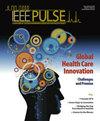让我们成为独特人类的脑细胞
IF 0.2
4区 医学
Q4 ENGINEERING, BIOMEDICAL
引用次数: 0
摘要
早在圣地亚哥-拉蒙-卡哈尔(Santiago Ramón y Cajal)最早在显微镜下观察脑组织时,一个多世纪以来,科学家们就已经知道大脑中含有多种类型的细胞。但直到最近,我们还缺乏足够高分辨率的工具来研究这些细胞,以真正了解它们的作用。本文章由计算机程序翻译,如有差异,请以英文原文为准。
The Brain Cells That Make Us Uniquely Human.
For over a century, scientists have known that the brain contains multiple cell types, dating back to Santiago Ramón y Cajal's earliest observations of brain tissue under a microscope. But until recently, we lacked the tools to study those cells with enough resolution to truly understand their roles.
求助全文
通过发布文献求助,成功后即可免费获取论文全文。
去求助
来源期刊

IEEE Pulse
ENGINEERING, BIOMEDICAL-
CiteScore
1.10
自引率
0.00%
发文量
88
审稿时长
6-12 weeks
期刊介绍:
IEEE Pulse covers both general and technical articles on current technologies and methods used in biomedical and clinical engineering; societal implications of medical technologies; current news items; book reviews; patent descriptions; and correspondence. Special interest departments, students, law, clinical engineering, ethics, new products, society news, historical features and government.
 求助内容:
求助内容: 应助结果提醒方式:
应助结果提醒方式:


